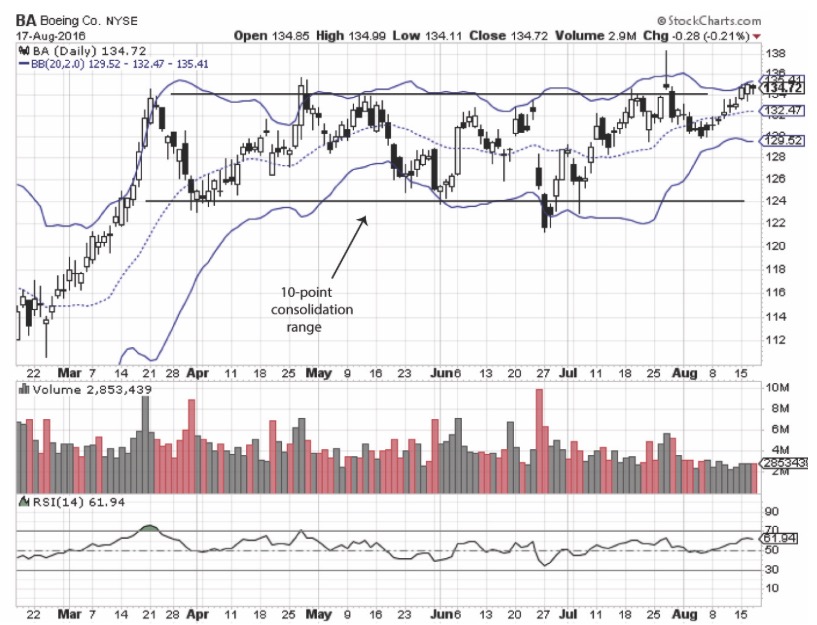Traders who believe a stock’s price is likely to rise in the near future face a dilemma: Is a long call affordable enough so that the price move will be enough to produce a profit?
One solution to this dilemma is the ratio calendar spread. This combines the sale of shorter-term options with the purchase of a larger number of longer-term options at the same strike.
The case of Boeing (BA) is a good example of how this works. The chart for the last six months reveals that BA has been trading in consolidation between $124 and $134. However, between 8/15 and 8/17, the price closed above this level. Only one previous session closed this high during the consolidation period, so this could be the signal pointing to a likely breakout.

Even so, buying long puts is expensive, and the balance has to be made between the premium cost and the time involved. A ratio calendar spread reduces overall cost.
For example, Boeing options can be opened at the following strikes and expirations:
August 26 (9 days to expiration)
SELL two 135 calls @ bid 1.12 = $224 (less $10 for trading costs) = net $214 credit
September 2 (16 days)
BUY three 135 calls @ ask 1.65 = $495 (plus $11 trading costs) = $506 debit
Total net debit = $292
This position assumes rapid time decay for the earlier-expiring short calls, and adequate time for the longer-term long calls to appreciate. The required breakeven for the long positions, assuming the short options expire worthless, is $135.97. This is calculated by dividing the net debit of $292 by three (options). Collectively, these will appreciate three points for every point of increase in the stock price. That is $97.33. This, added to the 135 strike, identifies breakeven at $135.97. If the stock price moves above that level by September 2, the position will be profitable.
This strategy makes sense as long as you believe the underlying price is likely to move higher in the near future. By exploiting rapid time decay on soon to expire options, the overall position reduces the cost of just buying calls. For example, buying a single September 9 weekly call costs 1.65 plus trading costs, or a total of $174. This requires a breakeven of $136.74 (strike of 135 plus cost of the call), or 0.77 higher than the breakeven in the ratio calendar spread.
Based on the price movement in the chart with price closing above resistance for three consecutive sessions and moving to the Bollinger Band upper band, the assumed higher price trend is likely.
Michael Thomsett blogs at TheStreet.com, Seeking Alpha, and several other sites. He has been trading options for 35 years.
